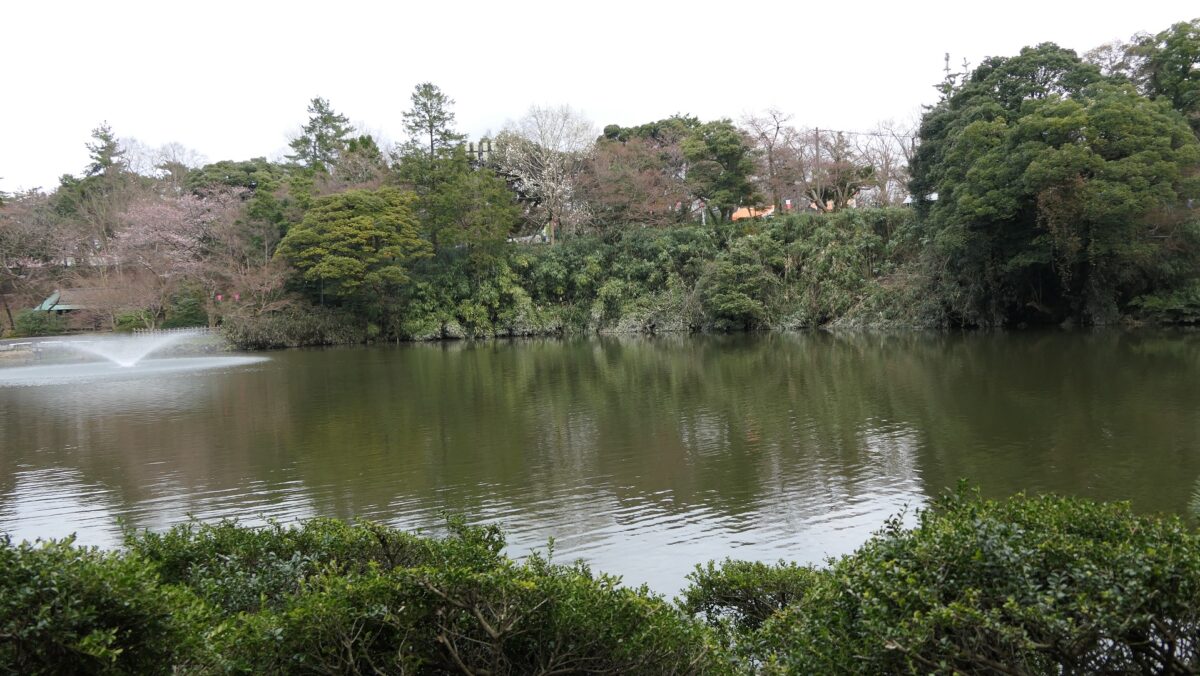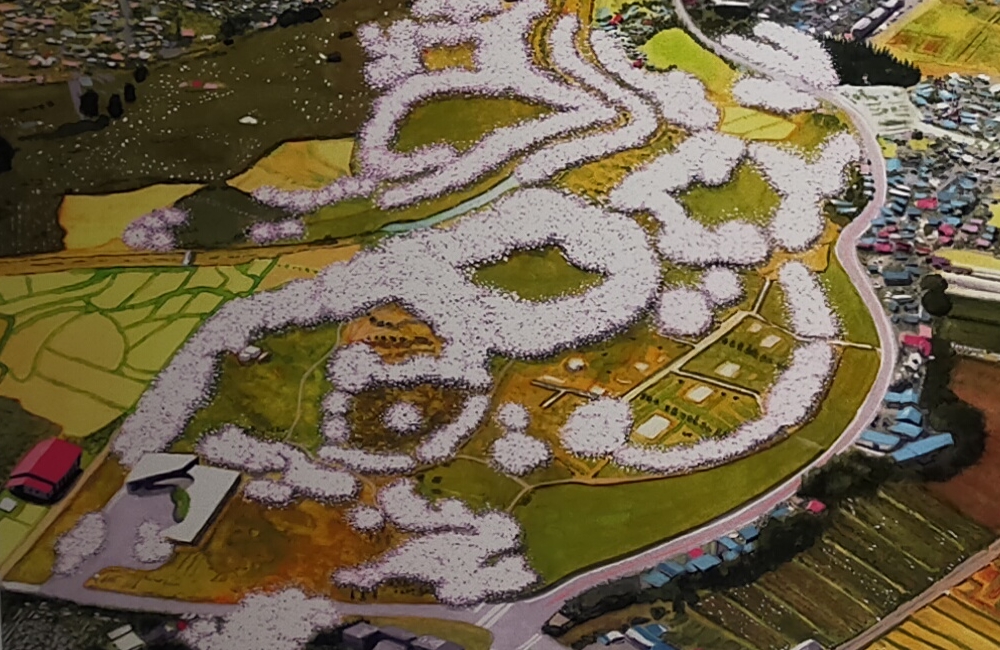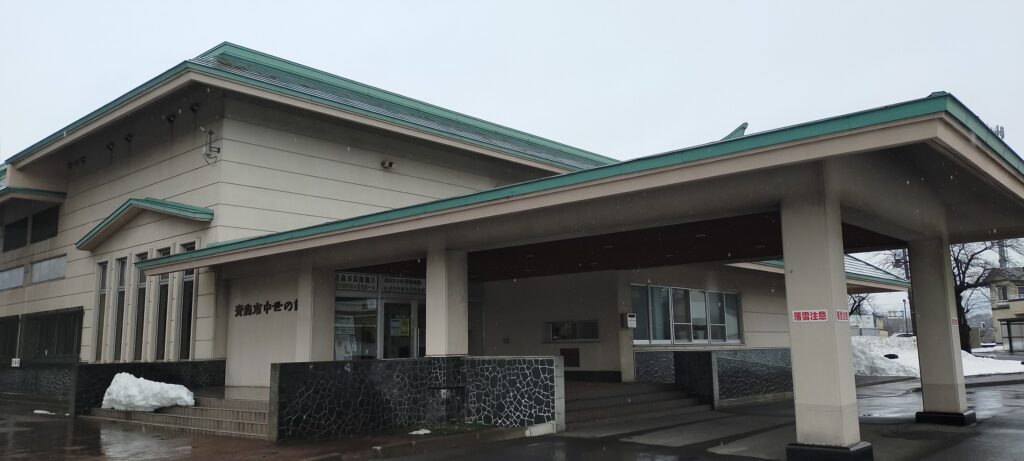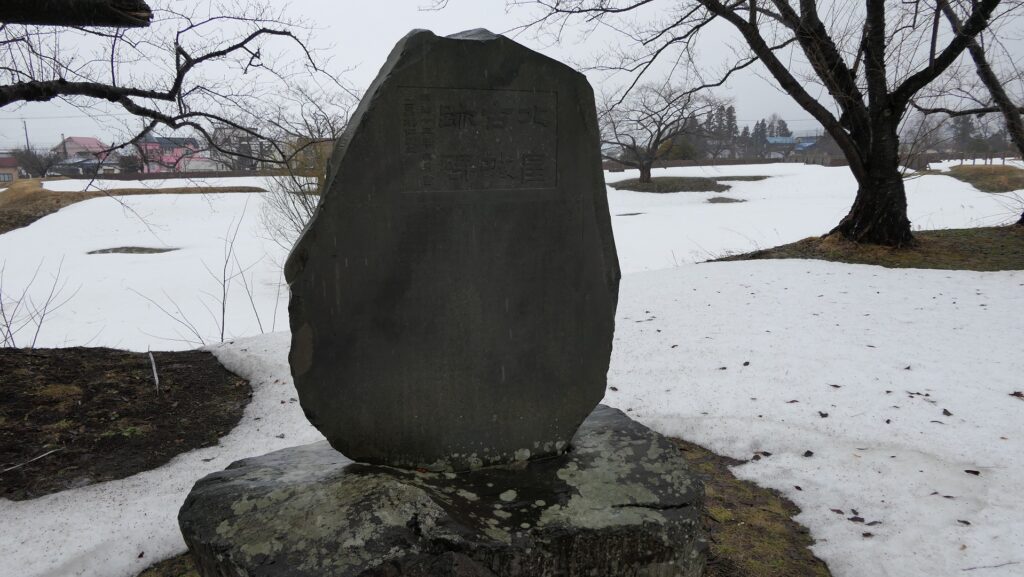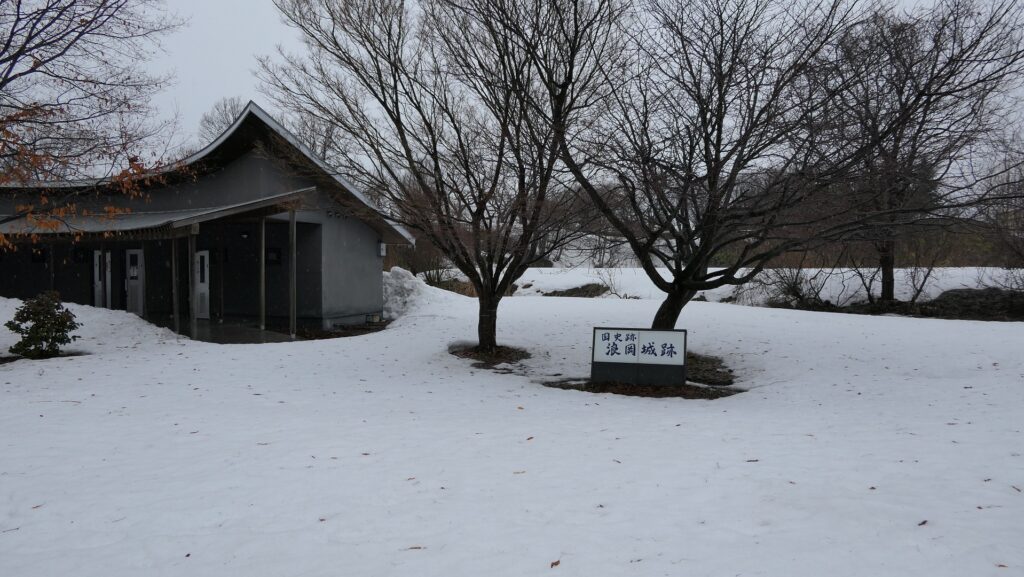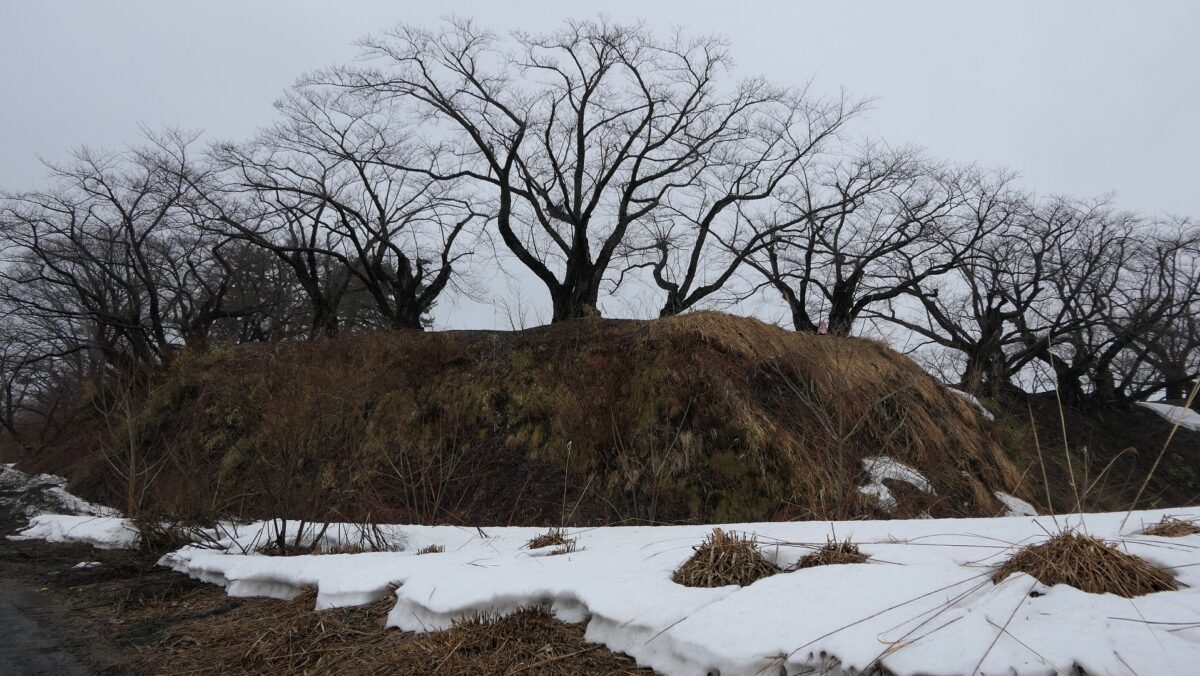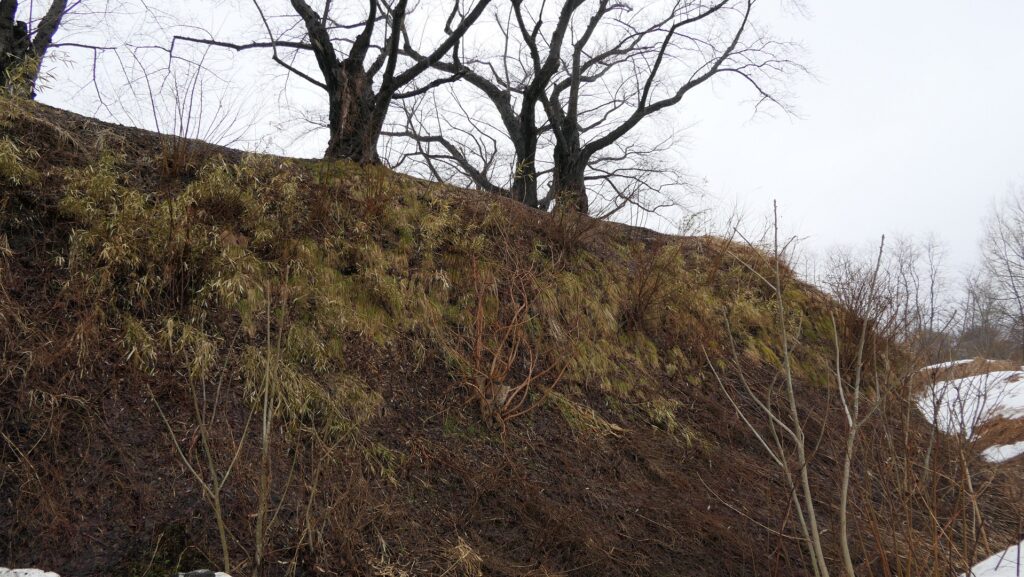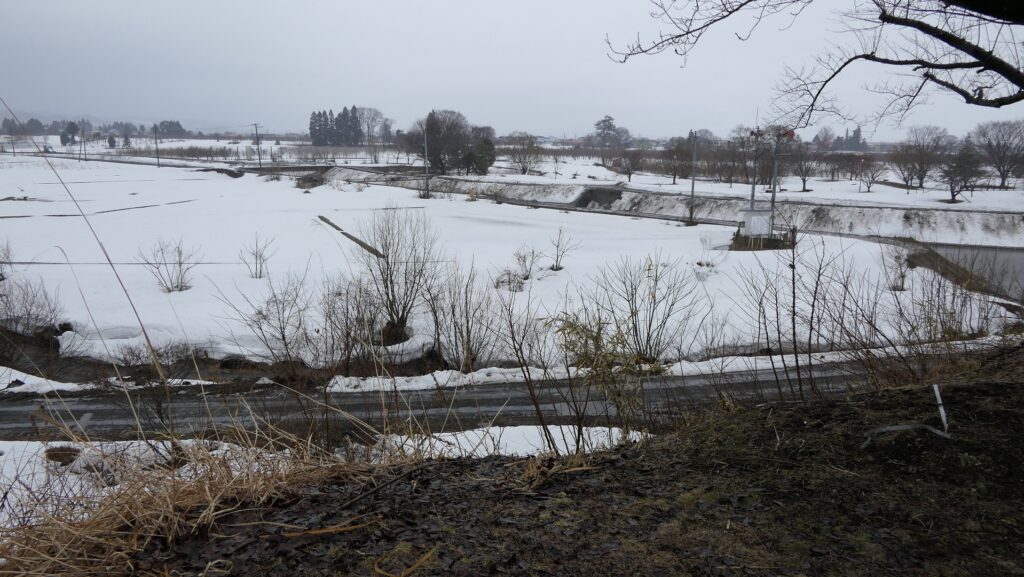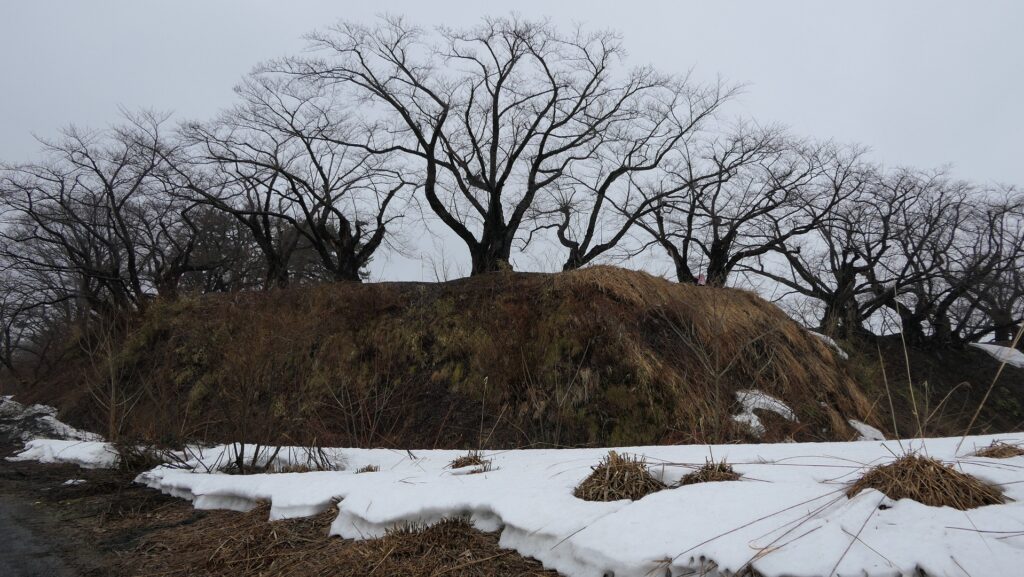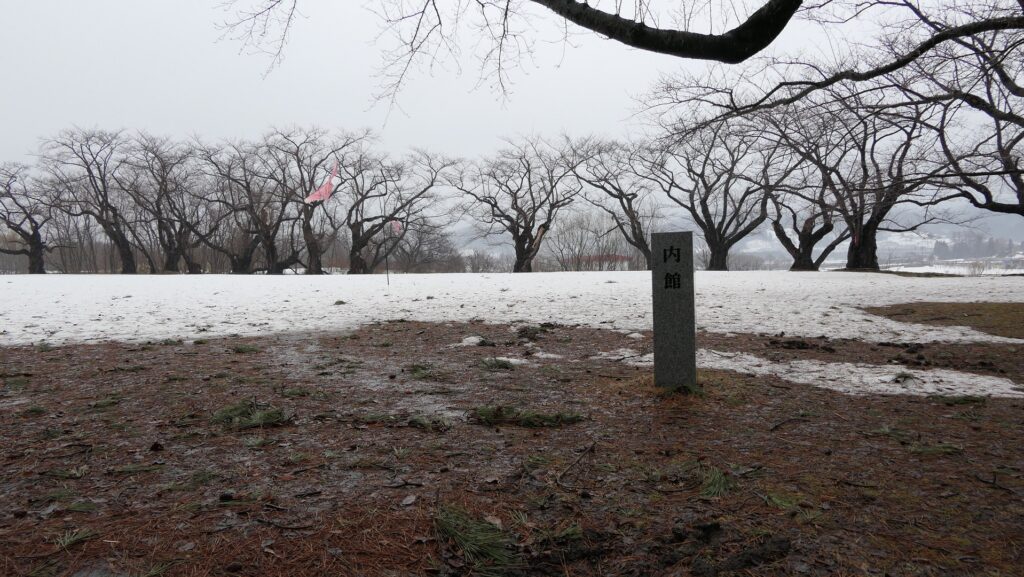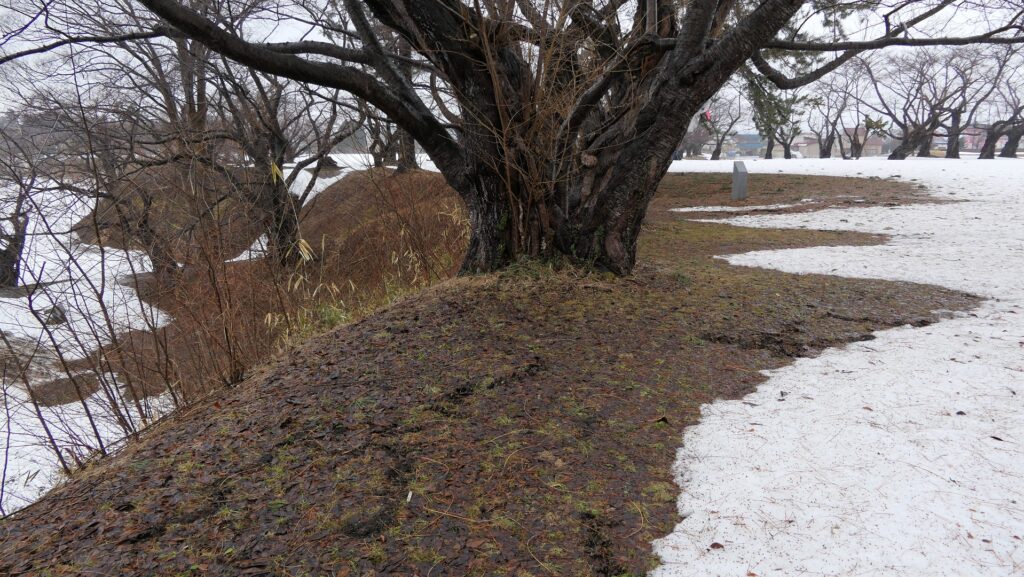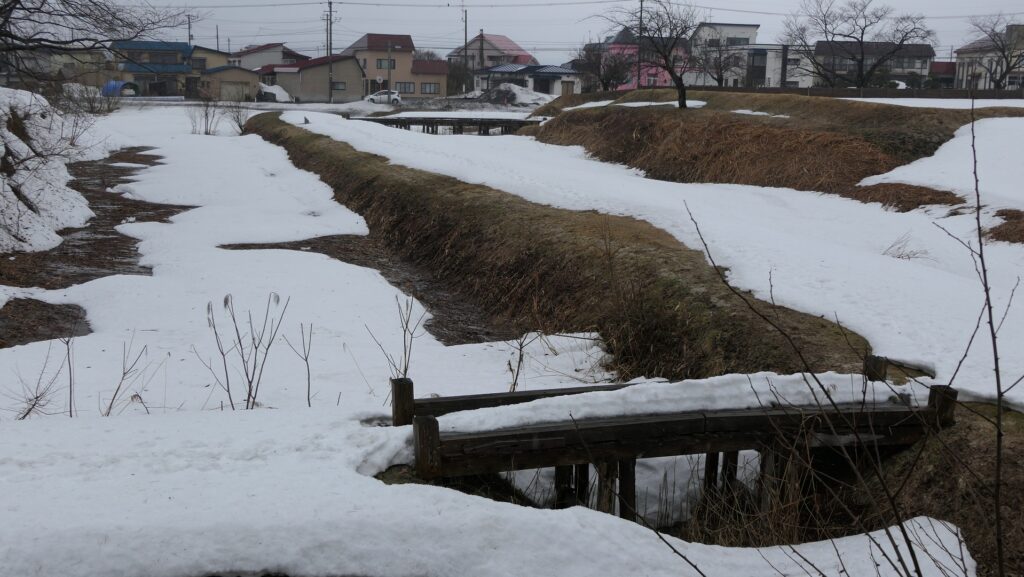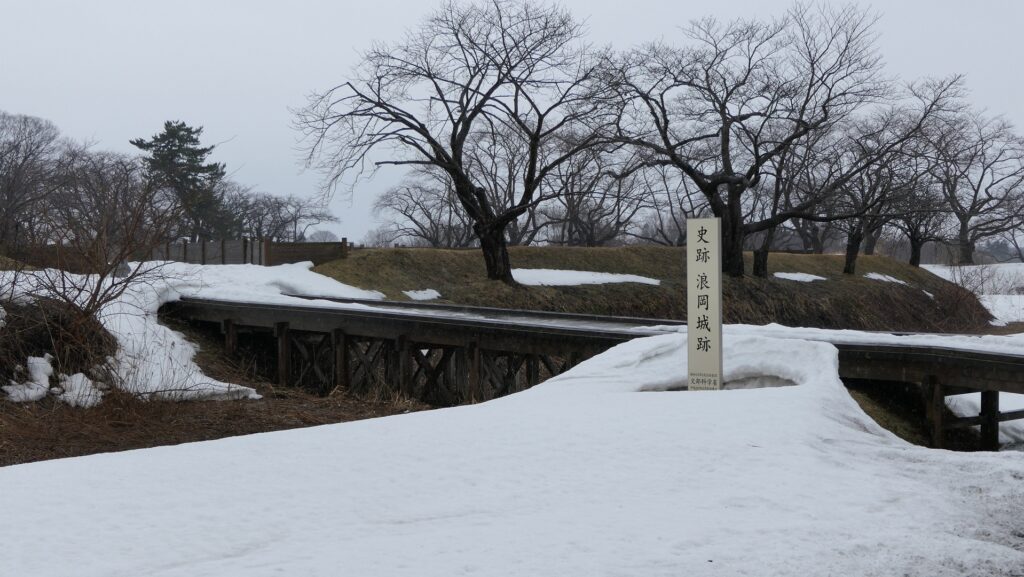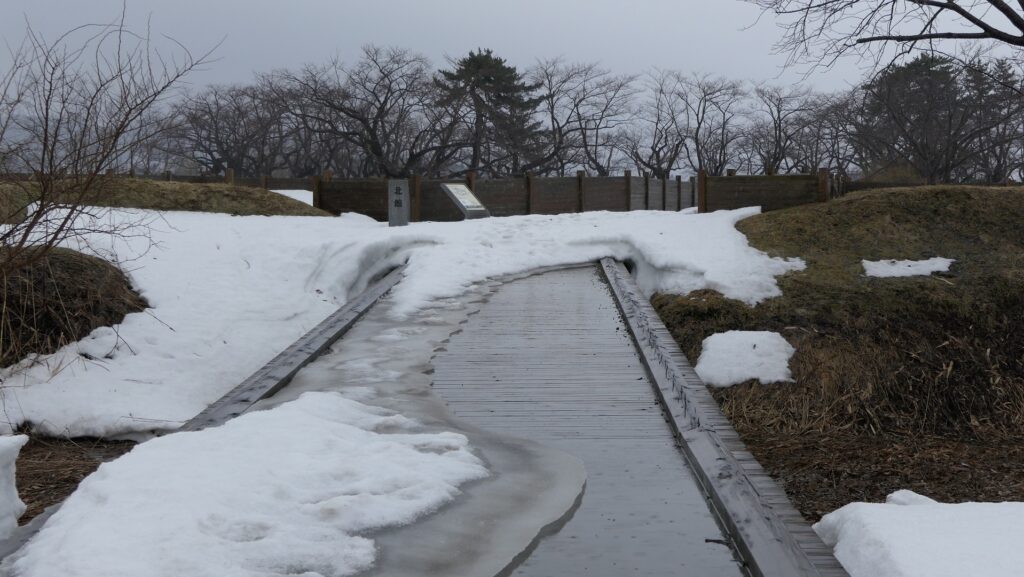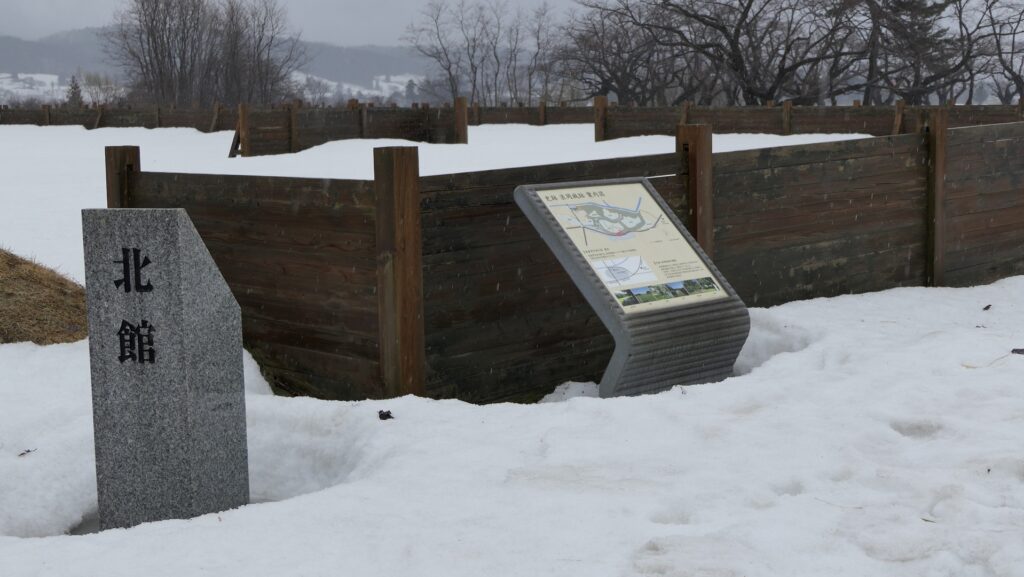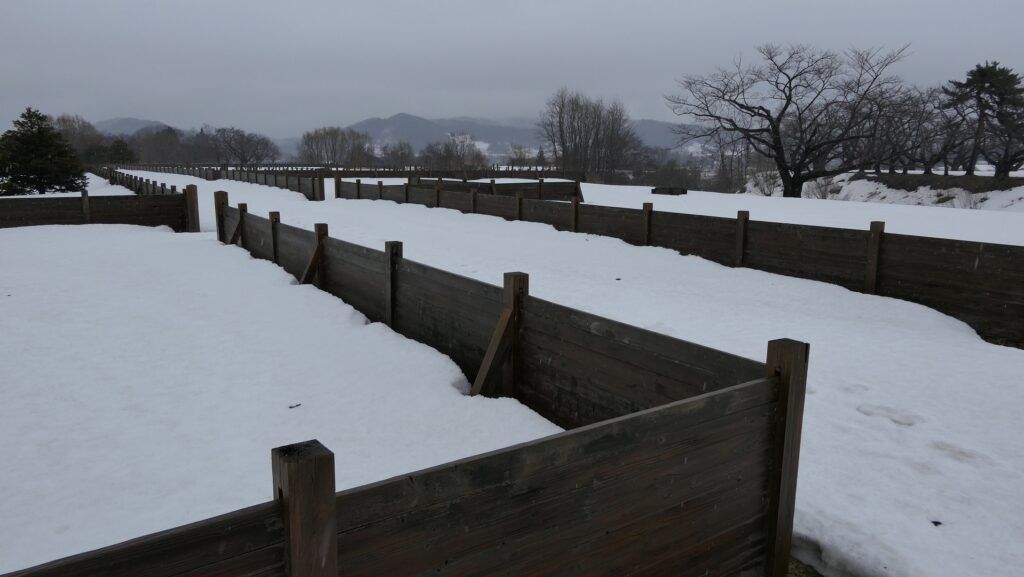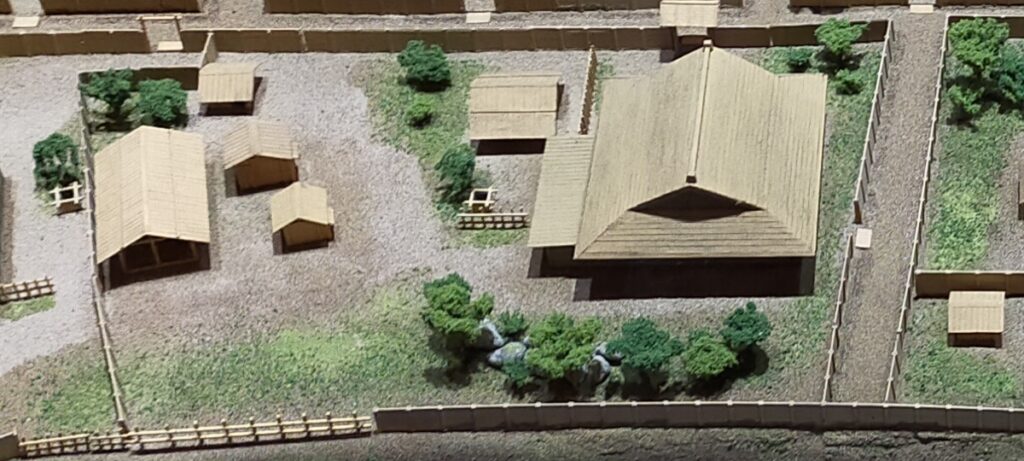Features
Five remaining Enclosures as Park
Today, the ruins of Takaoka Castle has become the Takaoka Old Castle Park which is open to the public. The park looks like part of the water moats rather than being surrounded of them. This is because almost all of the foundation and the water moats for the castle remained until now. In fact, the water moats occupy about one thirds of the park. It is really a natural park now as you can try going on a boat tour on the moat.
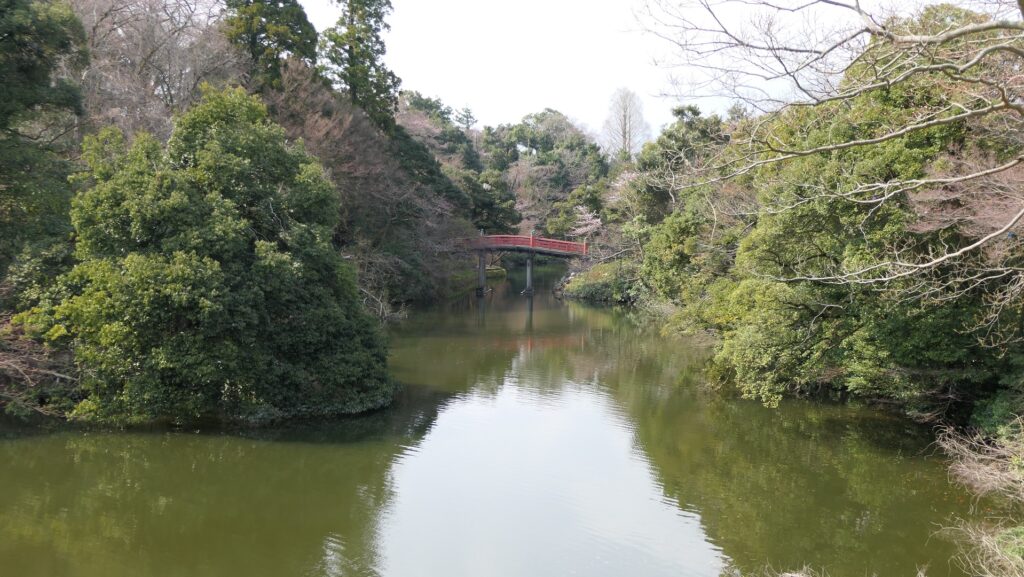
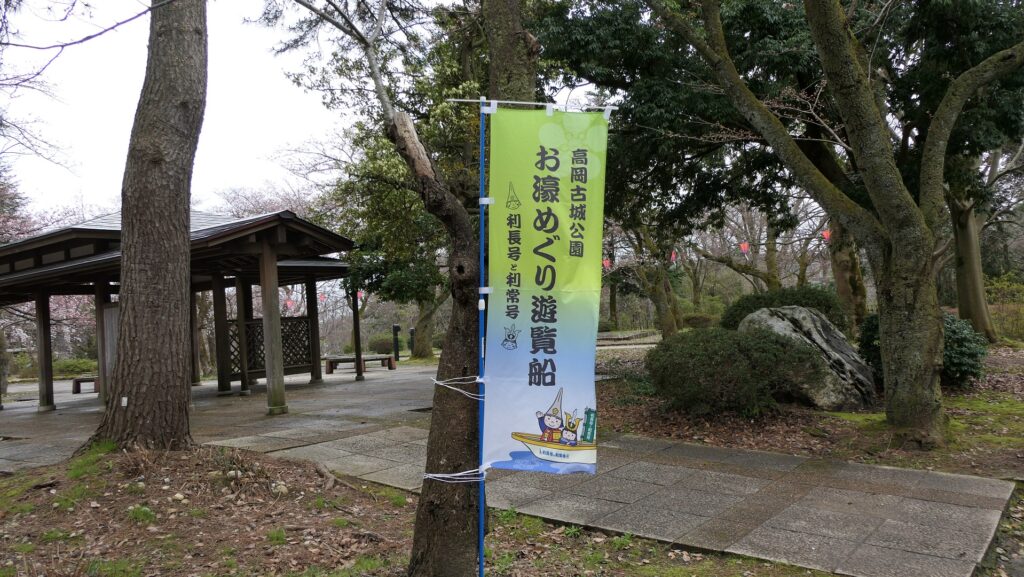
There are five enclosures such as the Main Enclosure among the moats. Each enclosure is independent and they are connected each other by only earthen walls or bridges. In particular, the Main Enclosure was accessible only through other enclosures, can not be accessible directly from the outside in the past.
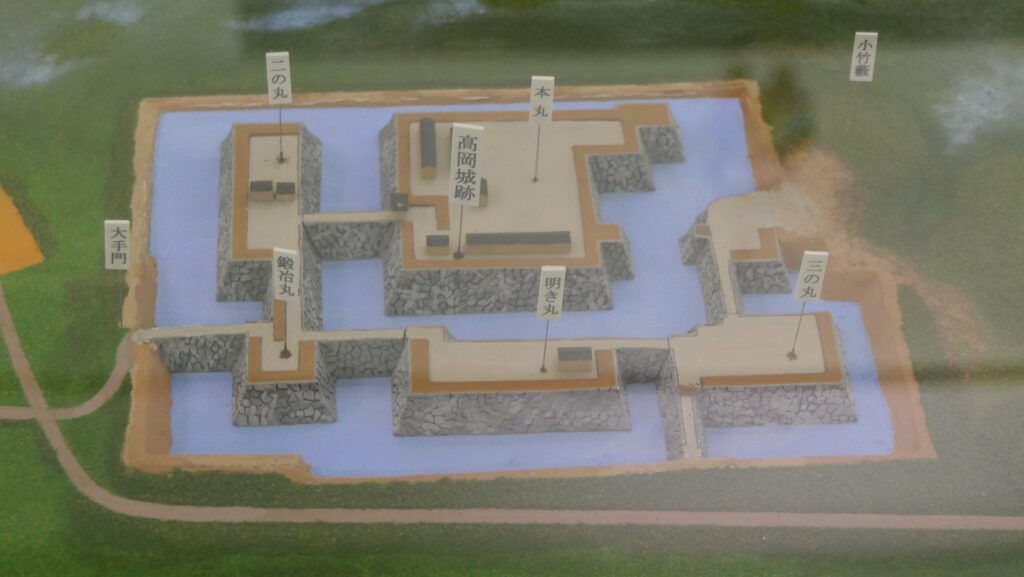
Main Enclosure like Hill
The Main Enclosure is the largest one and like a hill, so you have to climb up to the center of it. The enclosure has the Imizu Shrine and a square with the statue of Toshinaga Maeda standing beside it.
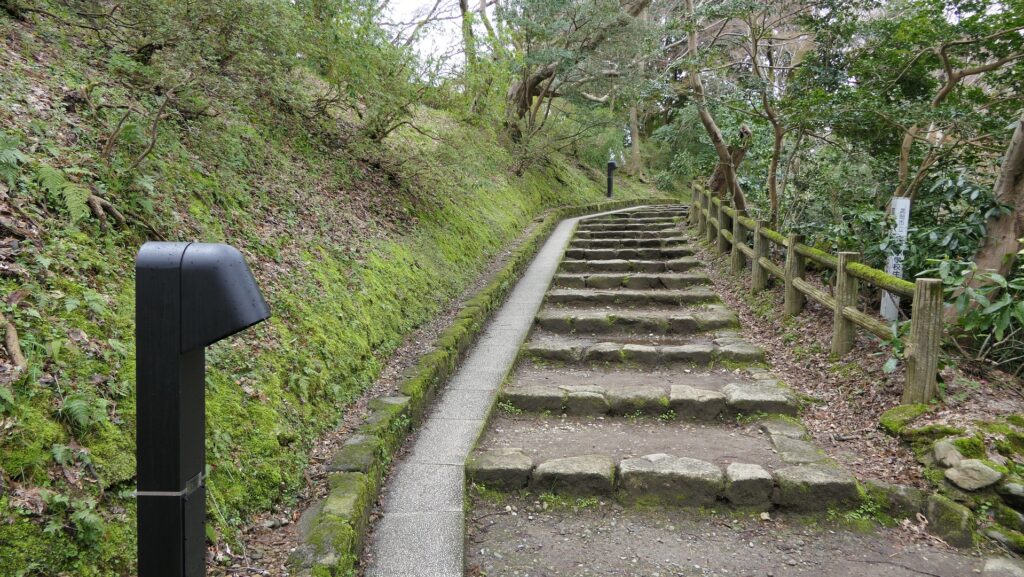

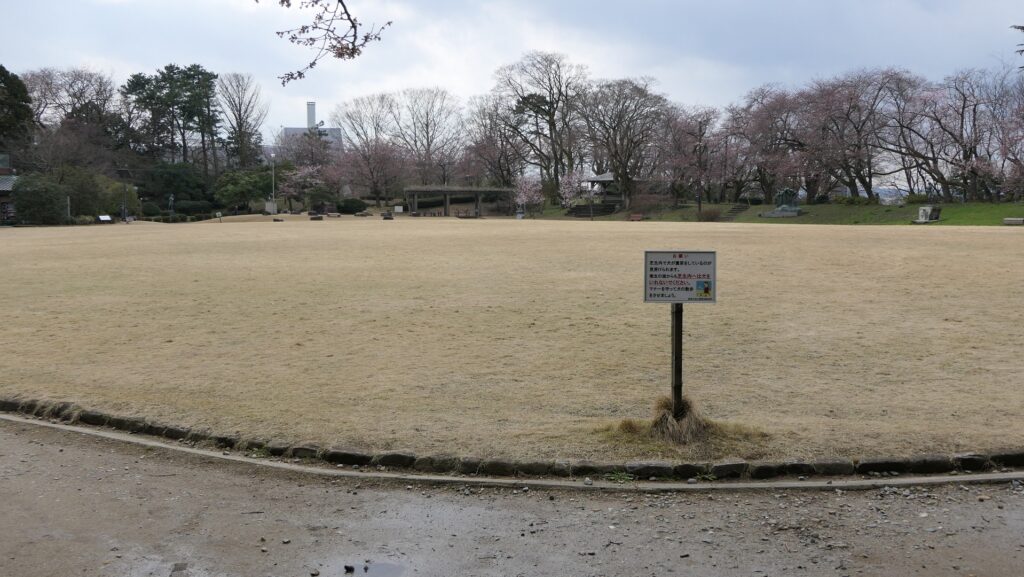
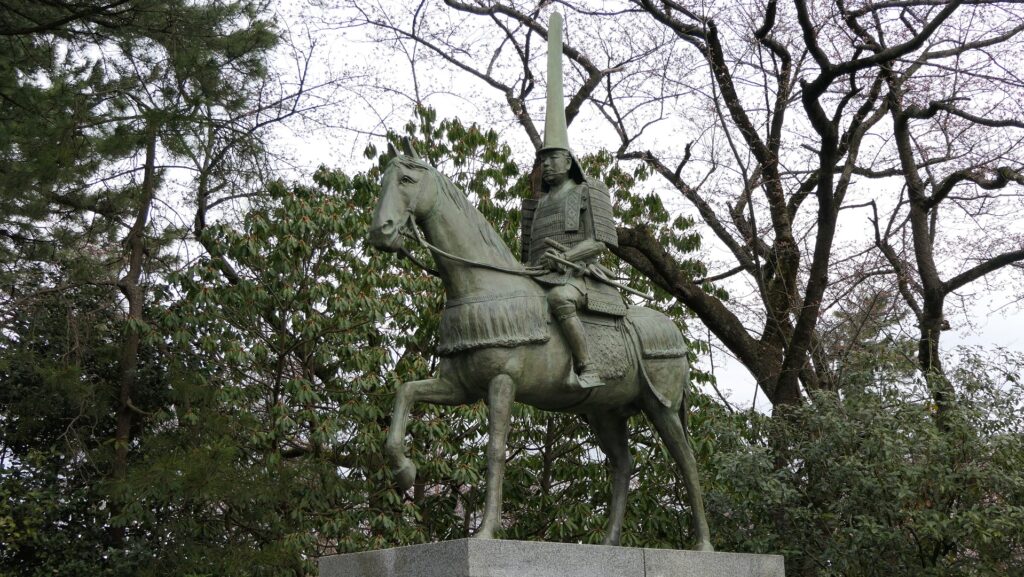
It was found through the excavation that the Main Hall for Toshinaga was built in the enclosure. It is uncertain about other buildings in the castle because the castle was abandoned before their completion. Only the stone walls remained at the one side of the enclosure, which may be the only castle-looking item.
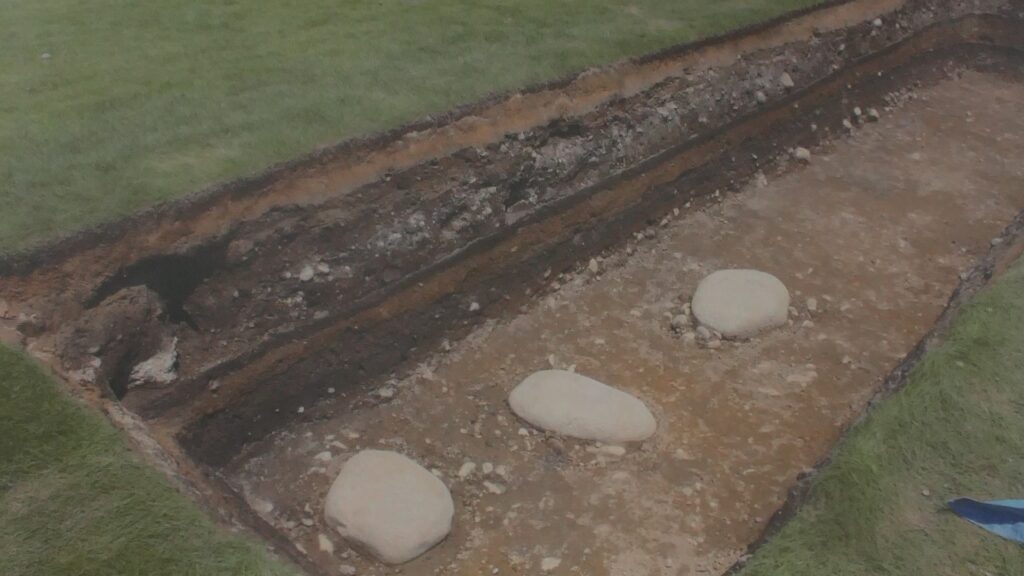
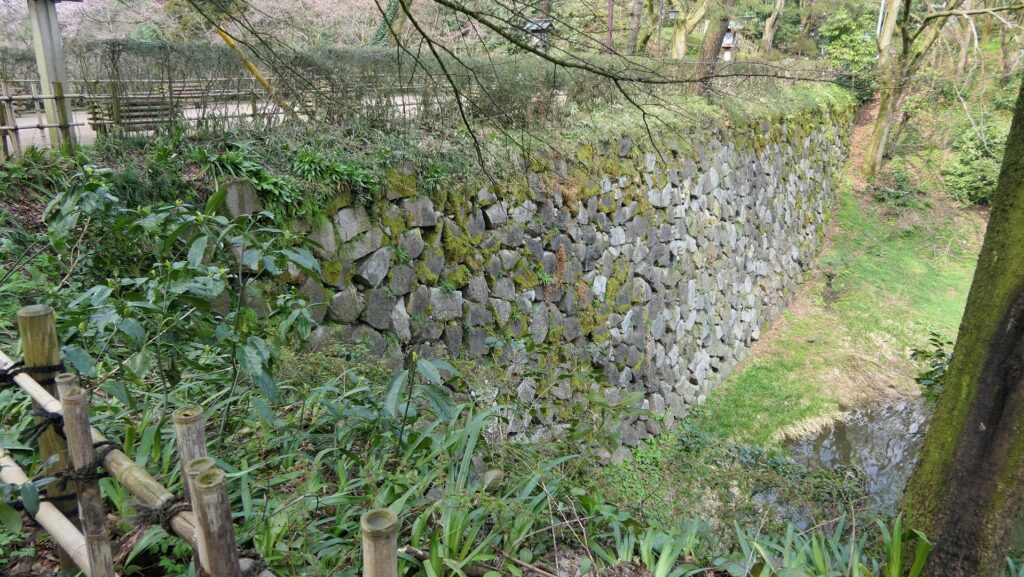
Other Enclosures for Modern facilities
Other enclosures are also used for modern facilities, the Second Enclosure for the Civic Hall, the Kaji-maru Enclosure for the City Museum, the Aki-maru Enclosure for a zoo, and the Minbu-maru Enclosure for a zym.
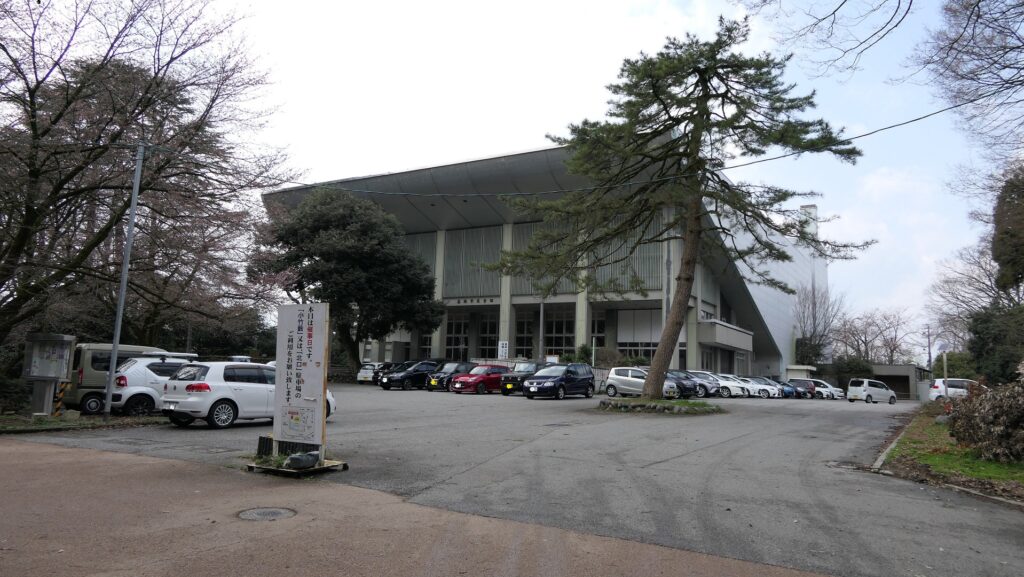
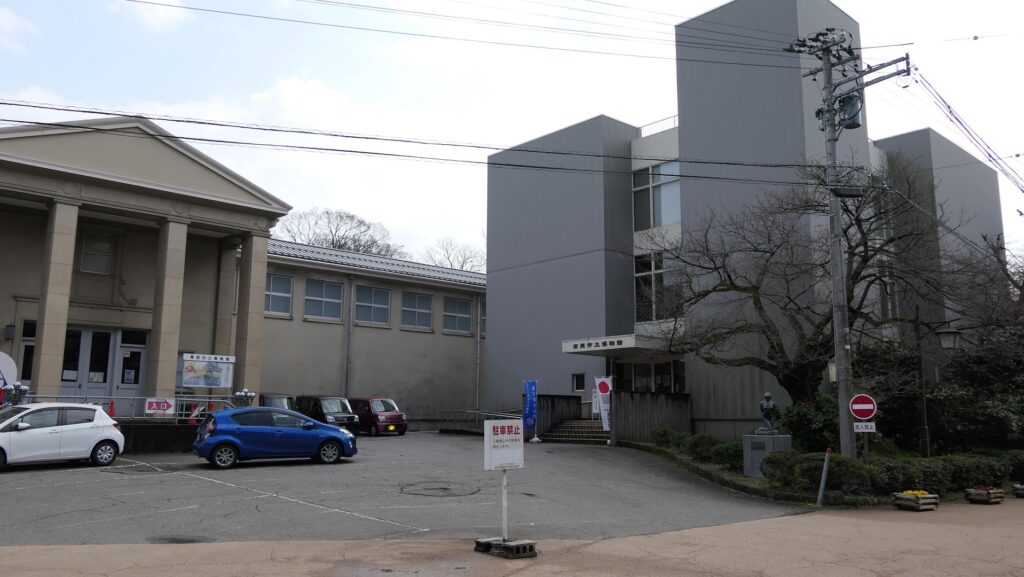
The whole park is also very known for cherry blossoms that surrounds it, they bloom around spring. The citizens in Takaoka City are very familiar with this park and recognize Toshinaga as the founder of the city.
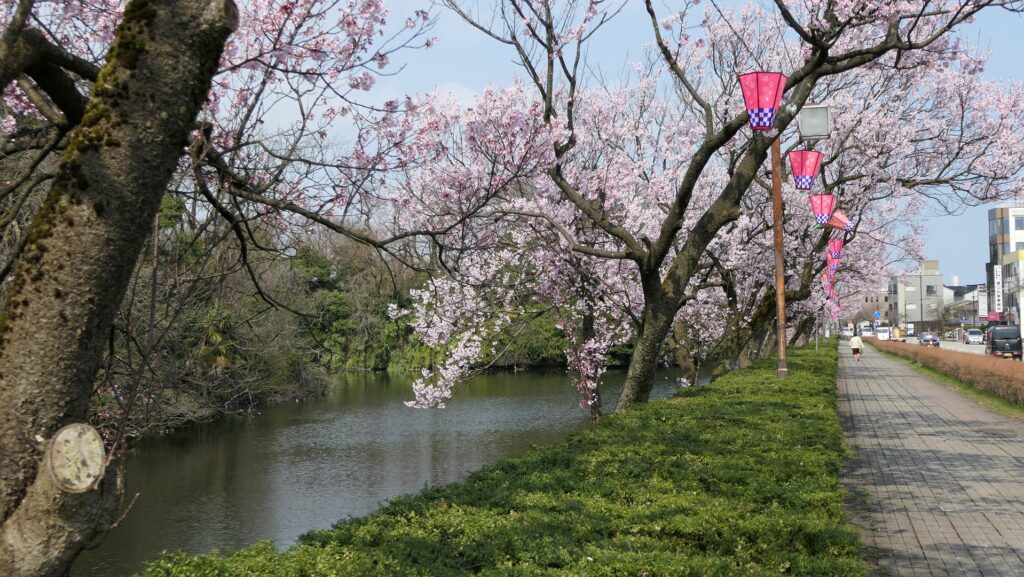
To be continued in “Takaoka Castle Part3”
Back to “Takaoka Castle Part1”

